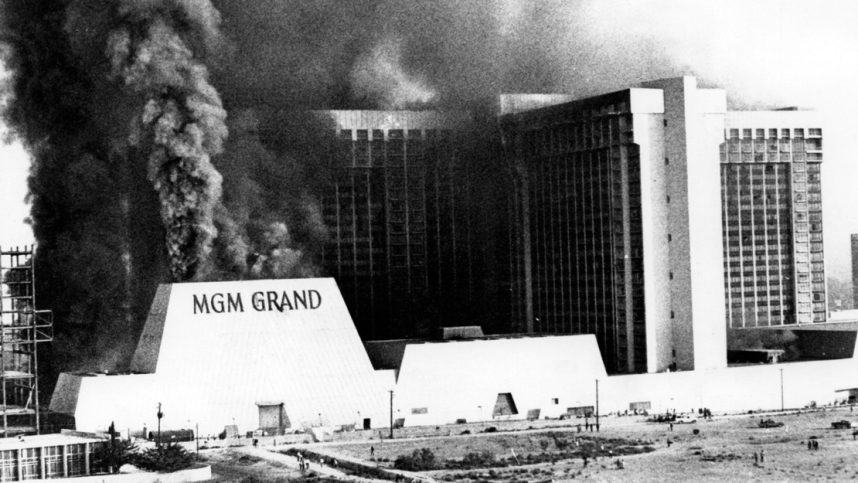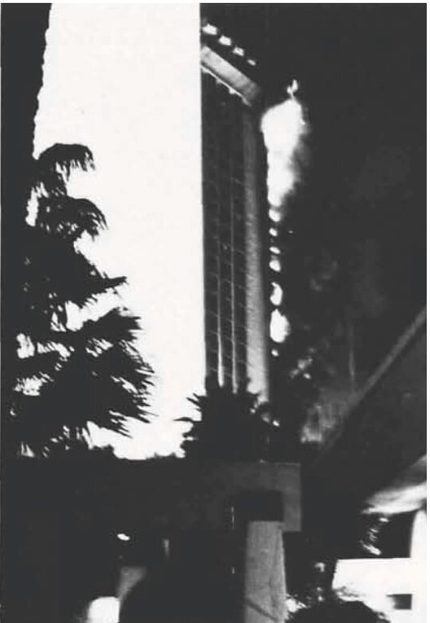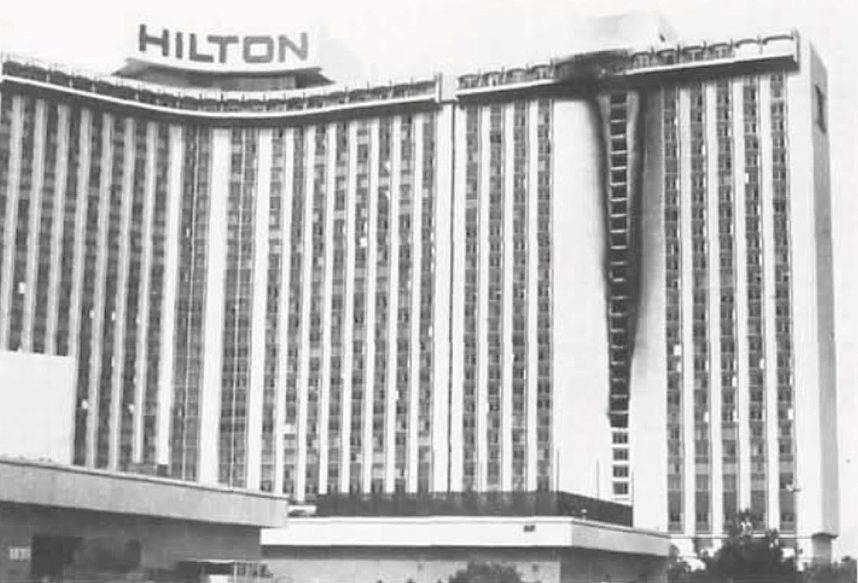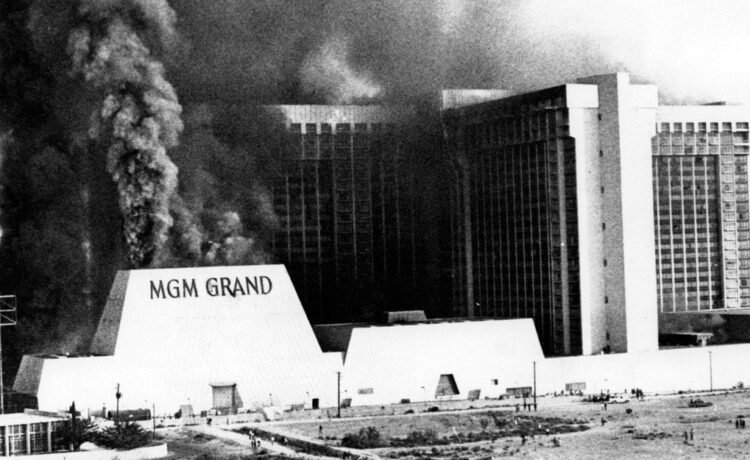Posted on: November 25, 2024, 08:02h.
Last updated on: November 21, 2024, 09:17h.
After the MGM Grand fire, which killed 86 people 44 years ago last Thursday, a fire safety commission was convened by Governor Bob List. It immediately came up with 11 recommendations for a new fire code to prevent this tragedy from ever recurring.

They included adding sprinklers to all guest rooms in existing high-rises, in addition to smoke detectors and emergency stairwell lighting. These measures seem so obvious today, most people assume they were immediately implemented.
But the commission buckled under pressure from the gaming industry, which valued saving money over saving lives. The recommendations were amended. As submitted, they only required the changes in new construction.
The real reason for the introduction and passage of Senate Bill 214, which included all of the commission’s original recommendations, occurred 12 weeks later. It was a less-remembered second fire at the Las Vegas Hilton.
That one only killed 8 people.
Not Again

The night of Tuesday, Feb. 10, 1981 didn’t begin in any special way at the Las Vegas Hilton, which at the time was the world’s largest hotel. Around 2,000 people were gathered in the showroom to watch performances by dancer Juliet Prowse and singer Andy Williams. About 2,000 others packed the casino.
At 7:30 p.m., 23-year-old Philip Cline, a new busboy at the hotel, noticed a small fire in an eight-floor elevator lobby in the East Tower. He reported it to the hotel operator, then filled a nearby trashcan with water from an unoccupied guest room.
Cline was relieved when a security guard showed up with a fire extinguisher. But the red metal cannister failed to work, so the guard left to find one that did.
Soon, it was too late for fire extinguishers. Flames had climbed the carpeted walls and blanketed the ceiling. Cline backed away from the searing heat and made the decision to abandon his post.
On his way toward the stairs, he knocked on as many doors as possible to alert guests to the threat. He exited on the second floor, the location of the room service employee area, to warn his co-workers of the danger, prompting the proper evacuation of the hotel.
Within 20 minutes, the flames, which traveled upward through the elevator shaft, had consumed enough carpeting and furniture to stretch from the 8th to the 30th floor of the tower. They reached 100 feet into the sky over the still-lit Hilton sign on the resort’s roof.
“The thing that really terrified me was looking out the back door and seeing that whole east wing elevator shaft on fire, and people waving electric lamps out the window,” Williams said later that evening. “A lot of torn sheets tied up. People looked like they were getting ready to leave their windows.”

More dangerous than the fire was the toxic cloud of smoke that became too thick for guests to see their hands as they tried to escape. Fortunately for many, the press coverage of the MGM Grand fire was fresh in their memories, so knew to breathe through wet towels to filter out the smoke.
As firefighters made their way through the hellscape, an intercom system warned guests not to break the windows of their rooms to avoid providing more oxygen for the fire to consume.
According to the Clark County Fire Department, seven victims died of smoke inhalation. The eighth died of chest injuries suffered from an apparent “leap or push off” the building. About 300 others, including 48 firefighters, suffered injuries, most from inhaling smoke.
The Hero Becomes the Suspect
Within hours of the fire, police investigators zeroed in on Philip Cline after they determined that three previous minor fires had broken out in the same Hilton tower during his shift — one in a ninth-floor firehose cabinet, one in a third-floor elevator lobby, and one in a second-floor linen closet.

Cline agreed to be escorted to the police station, where he submitted to, and failed, a polygraph test. He confessed to lying in three earlier statements, admitting that he did know how the fire started but was embarrassed to say.
In his new version of events, he claimed to have met a well-dressed man on the seventh floor who, after a pleasant conversation, agreed to meet Cline in the eighth-floor elevator lobby at 7:30 p.m., during one of his breaks.
When they met, the man took out a joint, which the two passed back and forth as they necked and cuddled. The joint accidentally fell and ignited some nearby curtains.
Cline was arrested and charged with eight counts of murder and one count of arson. In the trial, fire investigators presented videotape proving that the curtains failed to ignite simply from touching the lit end of a cigarette. They required exposure to a cigarette lighter or other open flame.
Cline’s former co-workers also testified that he had previously boasted about wanting to be remembered as a hero. And a cellmate of Cline’s from county jail testified that Cline told him that, after he started the fire, he used a phone on the third floor to call a friend. Cline asked that friend to call in a fire threat to the Hilton, so police might suspect organized crime involvement.

The jury found Cline guilty on all counts. Today, at 63, he continues serving eight consecutive life sentences, with no chance of parole, at the Southern Nevada Correctional Center.
Following the amended fire codes forced by SB 214’s passage on March 6, 1981, no other lives have been lost to high-rise hotel fires in Las Vegas.
But the MGM Grand fire alone was not enough to effect those changes.
Look for “Vegas Myths Busted” every Monday on Casino.org. Click here to read previously busted Vegas myths. Got a suggestion for a Vegas myth that needs busting? Email corey@casino.org.















